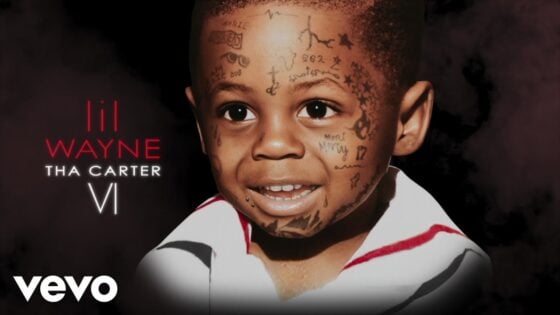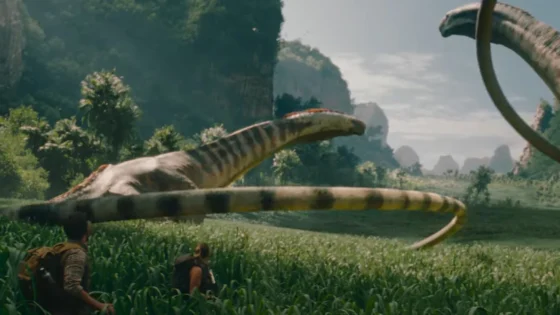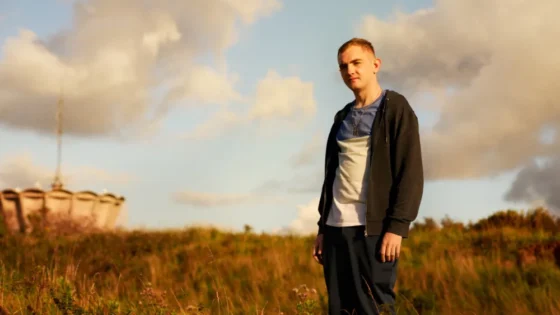The most honest magicians never use the word “magic” – they’re illusionists; they make believable that which can’t possibly be, and that’s what Harryhausen was: a master illusionist who made us believe that his table-top constructions of fabric and clay and metal were massive, mighty creatures out of legend, out of fantasy, out of our nightmares. He was a master of stop-motion animation; moving his creations a fraction of an inch per frame to create the illusion of flying saucers toppling the Washington Monument (Earth vs. the Flying Saucers, 1956), a tremendous octopus threatening the Golden Gate Bridge (It Came from Beneath the Sea, 1955), or an impossible prehistory of cavemen battling dinosaurs (One Million Years B.C., 1966). When he passed, a generation of filmmakers who’d grown up watching his work at movie house matinees and Saturday night monster movie TV slots saluted him, acknowledging how his work had inspired them. We’re talking the likes of James Cameron and Tim Burton. George Lucas said, “Without Ray Harryhausen, there would likely have been no Star Wars.”
Born, fittingly enough, in the movie capital of the world – Los Angeles – Harryhausen became enamored of the possibilities of stop-motion when he was just a 13-year-old kid, sitting enthralled through King Kong (1933) over and over. Harryhausen reached out to the genius behind Kong, the legendary stop-motion pioneer Willis O’Brien, and eventually found work as O’Brien’s technician on Mighty Joe Young (1949).
Harryhausen had already been experimenting at home with stop-motion, but possibly one of the greatest lessons he learned from his apprenticeship with O’Brien was that it took more than good animation techniques to bring their little creatures to life; they had to have character.
Think of O’Brien’s Kong, a combination of animal savagery and childlike mystification. Think of Kong standing over the prostrate T. Rex he’s beaten in battle, not quite understanding death, toying with the reptile corpse’s broken jaw. Harryhausen would apply that lesson time and again. Think of his Rhedosaurus in his first solo effort, The Beast from 20,000 Fathoms (1953), as it finds itself dying and trapped amid the burning latticework of a Coney Island roller coaster. There’s a grand sadness to this creature trapped out of time and place slowly lying down to die.
If familiarity with Harryhausen’s name is limited to aficionados, it’s a testament to the man’s integrity. “Modesty is a four-letter word in Hollywood, I’m afraid,” he told The Star-Ledger film reviewer Stephen Whitty some years ago. “I never fought for credit…”
But even had he done so, on many of his early films there might not have been much credit to be had. Harryhausen often worked on small-budgeted sci-fi and fantasy flicks like It Came from Beneath the Sea, 20 Million Miles to Earth (1957), and Earth vs. the Flying Saucers – matinee fodder for the kiddies in which Harryhausen’s effects work was often the most – and sometimes only — impressive thing about them.
Ray Harryhausen’s creatures may have been able to fit on a table-top, but the magic he created on-screen was big enough.
But he did work on some projects that were pure gold, and that we of a certain age count as treasured movie memories. My favorite – and the favorite of a lot of fantasy gourmets – was his 1963 effort, Jason and the Argonauts, which also showcased one of his finest pieces of work: a sword fight between three of the Argonauts and seven stop-motion animated skeletons. Those few minutes of screen time took Harryhausen four months to shoot but see that scene as a kid and it stays in your memory for a lifetime. Harryhausen himself knew it was one of his best pictures, and always considered it his favorite.
Harryhausen retired after the 1981 Clash of the Titans. While the effects work – unsurprisingly – was impressive, too much of the movie seemed to be working overly hard – and unsuccessfully — to recapture the magic of Jason. Though the movie was a moneymaker, the bad reviews stung and Harryhausen never made another movie.
See his films today, even in this age of CGI marvels, and they still entrance. Sometimes the very illusion of reality that’s the gift of CGI works against it. “If you make things too real,” Harryhausen once said, “sometimes you bring it down to the mundane.” The fluid, lifelike behemoth of 1998 Godzilla can’t hold a candle to the few minutes (which was all Harryhausen could afford to produce on the movie’s skimpy $200,000 budget) of monster footage in The Beast from 20,000 Fathoms.
And even if you hold that CGI outclasses the old stop-motion techniques, that Peter Jackson’s King Kong is more credible than Willis O’Brien’s and the dinosaurs of Jurassic Park (1993) look so much more lifelike than Harryhausen’s Rhedosaurus , you still have to respect – hell, be in awe – of what Harryhausen did. His work required he be a master engineer of miniatures, a master sculptor and make-up artist, an expert in materials and textures, a master model maker, a skilled cinematographer, and lighting designer, and also possess an expert enough eye to match the movements of his pint-sized creations with real world settings and real world people. And in those days, folks, it was all done by hand; no computers to help.
Maybe I’m being overly nostalgic because I sat in theaters as a kid, slack-jawed with awe, with wonder, with the sheer fun of what this – in Steven Spielberg’s words – “artist magician” accomplished with his little dolls and models. They were part of what made me fall in love with the movies.
And if, as I grew older, I couldn’t help but realize some of the movies were silly or even just plain bad, it didn’t change what they’d been for me years ago. Spielberg hit it right and spoke for so many of our generation when he said, on Ray Harryhausen’s passing, “All those so-called ‘B movies’ were the A movies of my childhood.”
Ray Harryhausen’s creatures may have been able to fit on a table-top, but the magic he created on-screen was big enough.
Bill Mesce

































